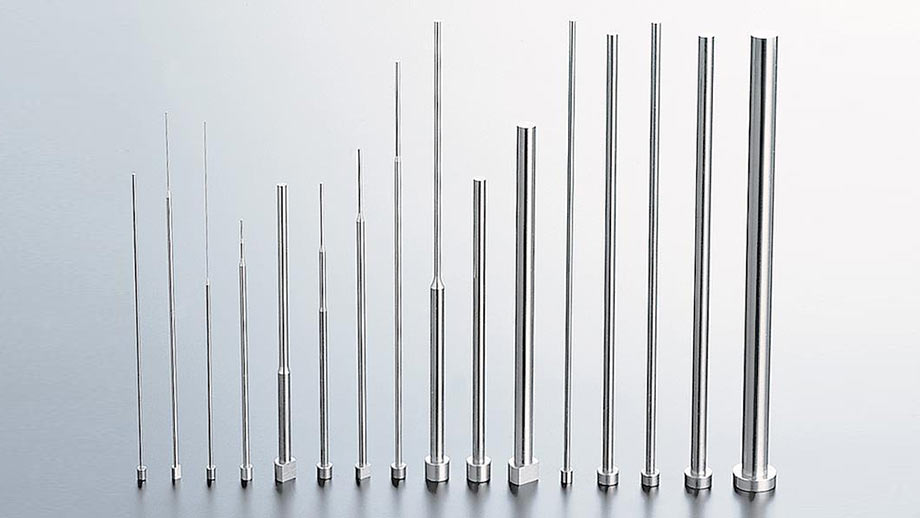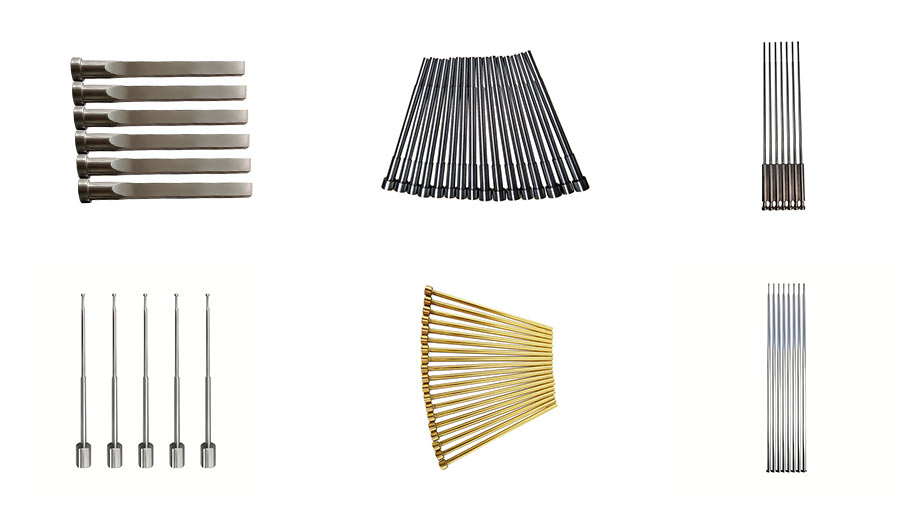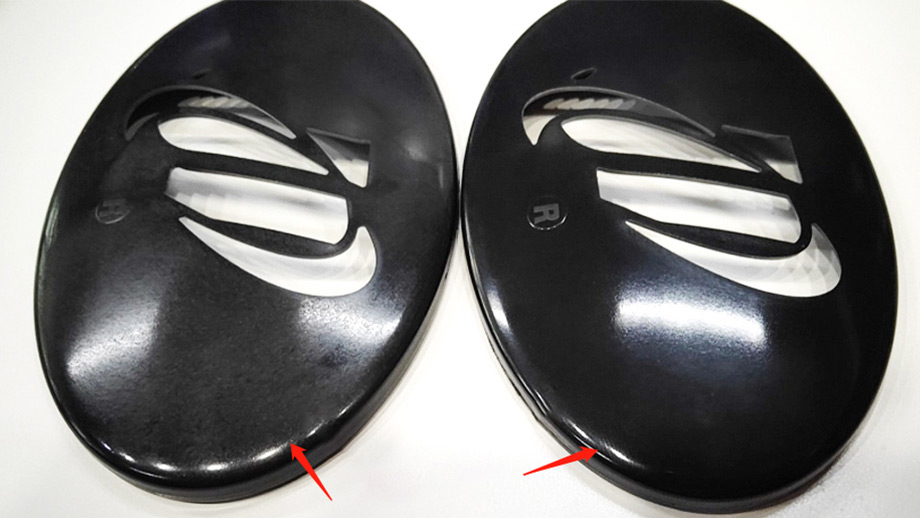Injection molding ejector pins play a very important role in the injection molding process. Injection molding is a popular manufacturing process used to create plastic parts. This process involves injecting molten plastic into a mold, which is then cooled and solidified to form the desired part. One essential component of the injection molding process is the ejector pin.

Ejector pins are small, cylindrical rods that are used to push the finished part out of the mold. They are typically located on the opposite side of the mold from the injection point. Ejector pins are essential to the injection molding process because they help ensure that the finished part is released from the mold without damage.
Ejector pins are very important in injection molding.
First, they help prevent the finished part from getting stuck in the mold. If the part is not released properly, it can become damaged or deformed, which can be costly and time-consuming to fix.
Second, ejector pins help ensure that the injection molding process is consistent and efficient. By using ejector pins, manufacturers can produce parts at a faster rate because they don’t have to wait for the part to cool and solidify before removing it from the mold.
Finally, ejector pins are crucial for maintaining the overall quality of the finished part. If the part is not released properly, it can become warped or distorted, which can affect its functionality and durability.
Ejector pins are a critical component of the injection molding process. They help ensure that the finished part is released from the mold without damage, maintain consistency and efficiency in the manufacturing process, and maintain the overall quality of the finished part. Without ejector pins, injection molding would be much less reliable and efficient.
the different types of ejector pins used in injection molding.

- Straight Ejector Pins
Straight ejector pins are the most commonly used type of ejector pins in injection molding. They are straight, cylindrical pins that are inserted into the mold from the ejector plate. When the mold opens, the ejector plate moves forward, and the straight ejector pins push the finished product out of the mold.
- Blade Ejector Pins
Blade ejector pins are similar to straight ejector pins, except that they have a flat, blade-like end instead of a rounded end. The blade end is designed to slide along the surface of the finished product, allowing it to be ejected more smoothly and with less damage.
- Sleeve Ejector Pins
Sleeve ejector pins are used when the finished product has a hole or a hollow center. The sleeve ejector pin is a cylindrical pin that has a smaller diameter pin inside it. When the mold opens, the sleeve ejector pin moves forward, and the smaller pin ejects the finished product from the mold.
- Two-Stage Ejector Pins
Two-stage ejector pins are used when the finished product has a deep cavity or an undercut. The two-stage ejector pin consists of two parts: a straight ejector pin and a blade ejector pin. The straight ejector pin pushes the finished product out of the mold, and the blade ejector pin slides along the surface of the finished product to eject it from the deep cavity or undercut.
- Floating Ejector Pins
Floating ejector pins are used when the finished product has an irregular shape or a non-uniform surface. The floating ejector pin is designed to move with the finished product, allowing it to be ejected smoothly and without damage.
How to choose the right ejector pins for your injection molding project.
- Material
The material of the ejector pins is an essential factor to consider when choosing the right ejector pins for your injection molding project. The most common materials used for ejector pins are hardened steel, beryllium copper, and H-13 steel. Hardened steel ejector pins are the most popular choice due to their durability and resistance to wear and tear. Beryllium copper ejector pins are an excellent choice for high-speed injection molding, as they offer excellent thermal conductivity. H-13 steel ejector pins are a good choice for high-temperature applications.

- Length
The length of the ejector pins is another critical factor to consider when choosing the right ejector pins for your injection molding project. The length of the ejector pins should be long enough to eject the finished product from the mold. However, they should not be too long, as this can cause damage to the mold and affect the quality of the finished product. It is essential to choose ejector pins that are the right length for your specific injection molding project.
- Diameter
The diameter of the ejector pins is also an essential factor to consider when choosing the right ejector pins for your injection molding project. The diameter of the ejector pins should be large enough to provide sufficient ejection force to eject the finished product from the mold. However, they should not be too large, as this can cause damage to the mold and affect the quality of the finished product. It is essential to choose ejector pins with the right diameter for your specific injection molding project.
- Coating
The coating of the ejector pins is another important factor to consider when choosing the right ejector pins for your injection molding project. The coating can help to reduce friction between the ejector pins and the mold, which can reduce wear and tear on the ejector pins and the mold. Some common coatings for ejector pins include titanium nitride, chrome, and diamond-like carbon. It is essential to choose the right coating for your specific injection molding project.
Common Ejector Pin Problems and How to Solve Them

- Pin marks on the finished product
One of the most common problems with ejector pins is the appearance of pin marks on the finished product. These marks are usually caused by the pins pushing against the product during ejection. To solve this problem, you can try the following:
Reduce the ejection force: If the pins are pushing too hard against the product, reducing the ejection force can help. This can be done by adjusting the ejection pressure or the stroke of the ejector pins.
Use a different pin material: Some materials, such as brass or copper, are softer than steel and can leave fewer marks on the product.
Use a different ejection method: Instead of using ejector pins, you can try using air ejection or hydraulic ejection. These methods can be gentler on the product and leave fewer marks.
- Stuck pins
Another common problem with ejector pins is that they can get stuck in the mold. This can be caused by a variety of factors, such as wear and tear, improper maintenance, or incorrect pin design. To solve this problem, you can try the following:
Clean and lubricate the pins: Regular cleaning and lubrication can help prevent the pins from getting stuck. Use a mild solvent to clean the pins and apply a thin layer of lubricant to reduce friction.
Replace worn pins: If the pins are worn out, they may be more likely to get stuck. Replace them with new pins to prevent this problem.
Redesign the pin: If the pin design is causing the problem, you may need to redesign it. Consult with a mold designer or engineer to create a pin that is less likely to get stuck.
- Bent pins
Ejector pins can also become bent or deformed over time, which can cause problems with ejection. This can be caused by excessive force, improper maintenance, or poor pin design. To solve this problem, you can try the following:
Reduce the ejection force: If the pins are being subjected to excessive force, reducing the ejection force can help prevent them from becoming bent.
Replace worn pins: If the pins are worn out, they may be more likely to become bent. Replace them with new pins to prevent this problem.
Redesign the pin: If the pin design is causing the problem, you may need to redesign it. Consult with a mold designer or engineer to create a pin that is less likely to become bent.
Ejector pins are important components of injection molding machines, but they can sometimes cause problems that affect the quality of the finished product. By understanding these common problems and how to solve them, you can improve the performance of your injection molding machine and produce high-quality products.
Conclusion

Ejector pins play an important role in the injection molding process. Cooperating with high-quality suppliers – JS Precision can provide you with comprehensive injection molding solutions. We can guarantee professional and comprehensive manufacturing advice for your injection molding project. If you have related customization needs, please contact us.
